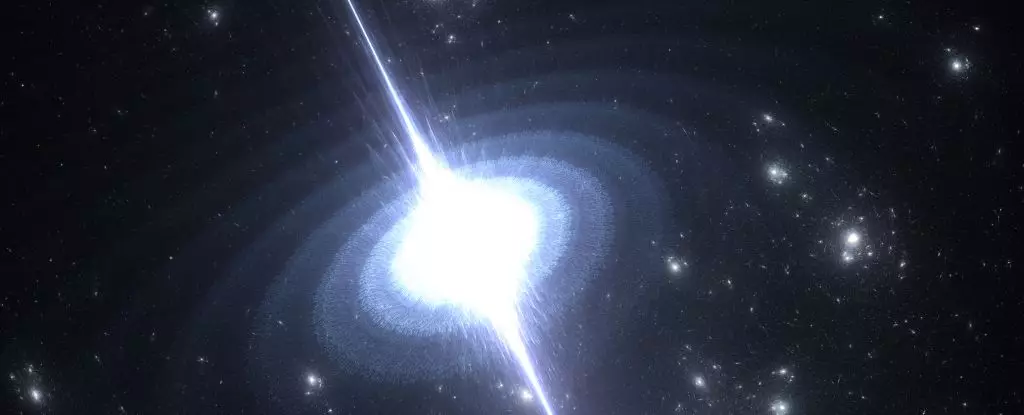The pursuit of understanding the cosmos often leads us to the examination of its most enigmatic components. Among these are axions, hypothetical elementary particles that astronomers and physicists have been speculating about since the 1970s. Recent studies suggest that neutron stars, with their awe-inspiring characteristics such as extreme density and formidable magnetic fields, may play a pivotal role in uncovering the existence of axions. If confirmed, the revelation of these particles could illuminate critical questions surrounding dark matter and the fundamental structure of the universe.
Axions are intriguing particles that emerged from theoretical physics to address some major gaps in our understanding of the universe. They are particularly notable for their proposed role in dark matter, a mysterious substance that constitutes roughly 27% of the universe but eludes direct detection. Their weak interactions with matter position axions as particularly elusive, similar to neutrinos. Despite being referenced in various theoretical frameworks, axions have yet to be observed directly, rendering them a tantalizing puzzle for scientists.
The existence of axions could provide explanations for inexplicable gravitational effects observed throughout the universe, which current theories based solely on visible matter fail to elucidate. In theoretical models, axions are predicted to oscillate into pairs of photons when exposed to strong magnetic fields, which introduces the potential for detection if these particles exist in the astrophysical realm around neutron stars.
Neutron stars are born from the remnants of massive stars that undergo supernova explosions. When these colossal entities collapse, they form incredibly dense cores exhibiting neutron degeneracy pressure strong enough to compress matter to staggering densities. This density makes neutron stars behave almost like a single atom, albeit on macroscopic scales. Furthermore, neutron stars are equipped with magnetic fields trillions of times stronger than Earth’s, offering an ideal environment for axion research due to their potential coupling with magnetic forces.
Certainly, pulsars—a specific kind of neutron star—add yet another layer of dynamism to this investigation. Pulsars emit powerful beams of radiation as they spin at astonishing rates, sometimes in milliseconds. Analogous to cosmic lighthouses, their rotation enhances their magnetic effects, generating waves of radiation that scientists can analyze for potential signs of axion decay or presence.
Despite extensive research, astronomers have struggled to detect axions in the vicinity of pulsars. This lack of evidence has not led to defeat; instead, it generates stronger limitations on the characteristics of axions. Most notably, the absence of detectable axion signals has become an asset, as it provides constraints on their mass range independent of any dark matter assumptions.
The latest studies propose that if axions do exist, they may accumulate around neutron stars, forming a dense “axion cloud” over time. These clouds could potentially reach densities 20 orders of magnitude greater than the local dark matter density, meaning they would generate detectable emissions. Researchers suggest two principal signatures that might reveal the presence of axions: a continuous radio signal correlating with the axion’s mass, and a burst of light that might manifest during the star’s demise.
While current observations have yet to unveil definitive axion signatures from pulsars, the research has set ambitious ground for future explorations. The implication that these axion clouds may exist in various neutron stars opens up a vast horizon for astronomers and physicists. The continuous signal remains the most plausible avenue for detection, as the cosmic timescales associated with axion decay processes, particularly the potential burst of light from dying neutron stars, extend far beyond the age of the universe.
By investigating these neutron star phenomena, researchers can refine their models of particle physics, better illuminating not only the identity of axions but also their mass and other intrinsic properties. Each study thus far has contributed incremental evidence, bolstering the notion that it’s essential to continue seeking these particles in various cosmic scenarios.
The enigmatic axions may hold the key to understanding dark matter and the universe’s structural components. Neutron stars, with their magnificent attributes and violent backgrounds, serve as powerful laboratories for observing these hypothetical particles. The journey to unravel the mystery of axions is ongoing, but as our technologies and methodologies advance, the prospect of detecting these elusive entities might finally become a reality, revolutionizing our comprehension of the cosmos.

